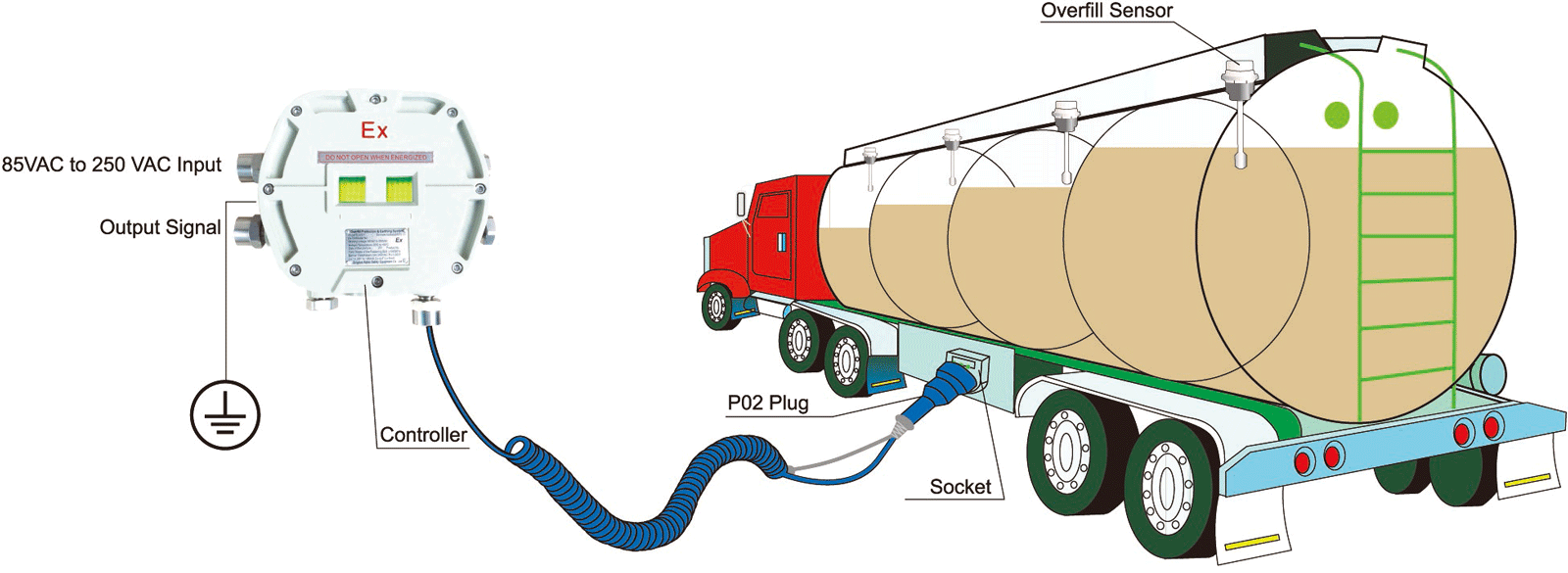- Home
- About us
- Products
- Static Grounding Devices
- Leakage Detector
- Overfill Protection Devices
- Overfill Protection & Grounding System
- Retractable Grounding Reel
- Surveillance Radar
- Magnetic Price Sign
- Density Meter
- Laser Methane Detector
- Mass Flow Meter
- Rotating Turbo Nozzle
- Fuel Dispensers
- Batch Controller
- Positive Displacement Meter
- Faqs
- News
- Certificate
- Contact us
Static elimination
publisherALPTEC
time2021/08/09

- Before loading and unloading high-risk liquid chemicals that are easy to accumulate static electricity, all loading and unloading equipment and facilities should be effectively connected and grounded.
Before
loading and unloading high-risk liquid chemicals that are easy to accumulate
static electricity, all loading and unloading equipment and facilities should
be effectively connected and grounded.
2.1
The ground wire should use soft copper stranded wire, the diameter of the wire
should be greater than 2.6mm, and the cross-sectional area should be greater
than 5.5mm2.
2.2
The distance between the grounding point on the ship and the pipeline interface
should be greater than 3m.
2.3
When loading and unloading inflammable and explosive dangerous goods, a copper
wire jumper should be made between the pipeline flanges.
2.4
Before the operation, the electrostatic grounding wire must be connected before
connecting the pipeline; after the operation is completed, the pipeline must be
disassembled first, and then the electrostatic grounding wire must be
disassembled.
2.5
When goods are sampled and barreled, the metal parts must be in good contact or
connection and be grounded reliably.
2.6
It is forbidden to use insulated containers to fill flammable and explosive
liquefied dangerous goods.
2.7
The fixed pipeline of the wharf must be reliably grounded.
2.8
It is not allowed to use insulating material gauges, temperature measurement
and sample sampling tools for operations. When sampling and measuring in the
cabin or cargo tank, the metal parts must be connected with the hull or cargo
tank.
2.9
When loading and unloading, crane pipes, pipelines and tankers must be
effectively bridged and grounded before loading and unloading of tankers.
2.10
Increase air humidity. The resistivity of the work area is greatly reduced, and
static electricity is not easy to accumulate.
2.11
Periodically inspect the grounding electrode at the hazardous chemical
operation site to make the resistance of the grounding electrode less than 25Q.
